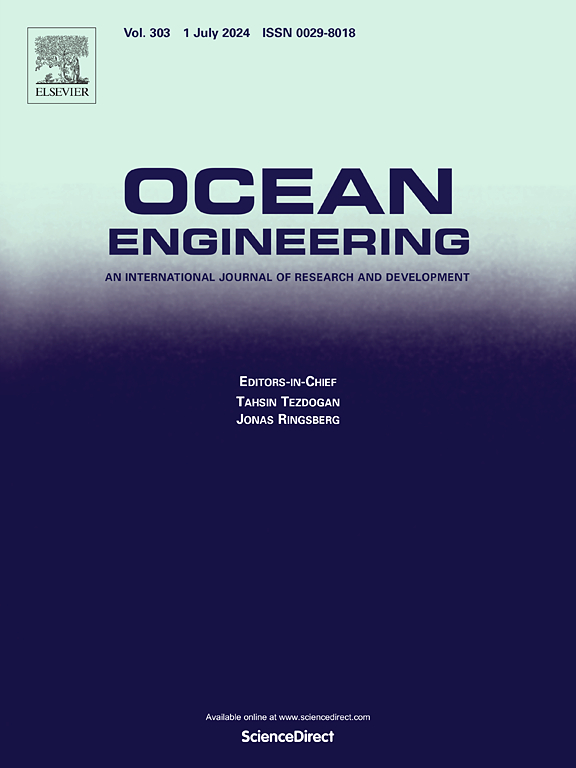基于非奇异分段终端滑模方法的网络化水面航行器预定义时间分布式最优编队控制
IF 5.5
2区 工程技术
Q1 ENGINEERING, CIVIL
引用次数: 0
摘要
传统的网络控制系统协同控制方案在平衡最优性和收敛速度方面面临挑战。为此,本文提出了一种面向网络化水面舰艇的预定义时间分布式最优编队算法来解决这些问题。在该算法下,每辆车被分配一个成本函数,以达到最优的性能,如能耗,避碰等。主要控制目标是驱动nmsv形成设计的地层模式,同时在预定时间内最小化总成本函数。该算法由分布式优化层和局部控制器层组成。更详细地说,第一层采用基于共识的分布式优化协议,根据给定的成本函数计算最佳位置和速度。第二层集成了一个预定义时间非奇异终端滑模控制器,以导出的最优解为中心,在用户指定的时间内实现NMSVs的最优编队。通过基于lyapunov的稳定性分析,得到了保证该方案有效性的充分条件。仿真结果也验证了该方法的有效性和鲁棒性。本文章由计算机程序翻译,如有差异,请以英文原文为准。
Predefined-time distributed optimal formation control of networked marine surface vehicles based on a nonsingular segmented terminal sliding mode method
Generally, traditional cooperative control schemes for networked control systems face challenges in balancing optimality and convergence speed. For this reason, this paper proposes a predefined-time distributed optimal formation algorithm for the networked marine surface vehicles (NMSVs) to address these issues. Under this algorithm, each vehicle is assigned a cost function for achieving optimal performance such as energy consumption, collision avoidance, and so on. The main control objective is to actuate the NMSVs to form a designed formation pattern while minimizing the total cost function within a predefined time. The proposed algorithm is built by a distributed optimization layer and a local controller layer. For more details, the first layer employs a consensus-based distributed optimization protocol to compute the optimal position and velocity based on the given cost functions. The second layer integrates a predefined-time non-singular terminal sliding mode controller to realize the optimal formation of NMSVs with the derived optimal solution as the formation centre in a user-specified time. Through Lyapunov-based stability analysis, the sufficient conditions for guaranteeing the effectiveness of the proposed scheme are derived. Simulation results also confirm the effectiveness and robustness of the proposed method.
求助全文
通过发布文献求助,成功后即可免费获取论文全文。
去求助
来源期刊

Ocean Engineering
工程技术-工程:大洋
CiteScore
7.30
自引率
34.00%
发文量
2379
审稿时长
8.1 months
期刊介绍:
Ocean Engineering provides a medium for the publication of original research and development work in the field of ocean engineering. Ocean Engineering seeks papers in the following topics.
 求助内容:
求助内容: 应助结果提醒方式:
应助结果提醒方式:


